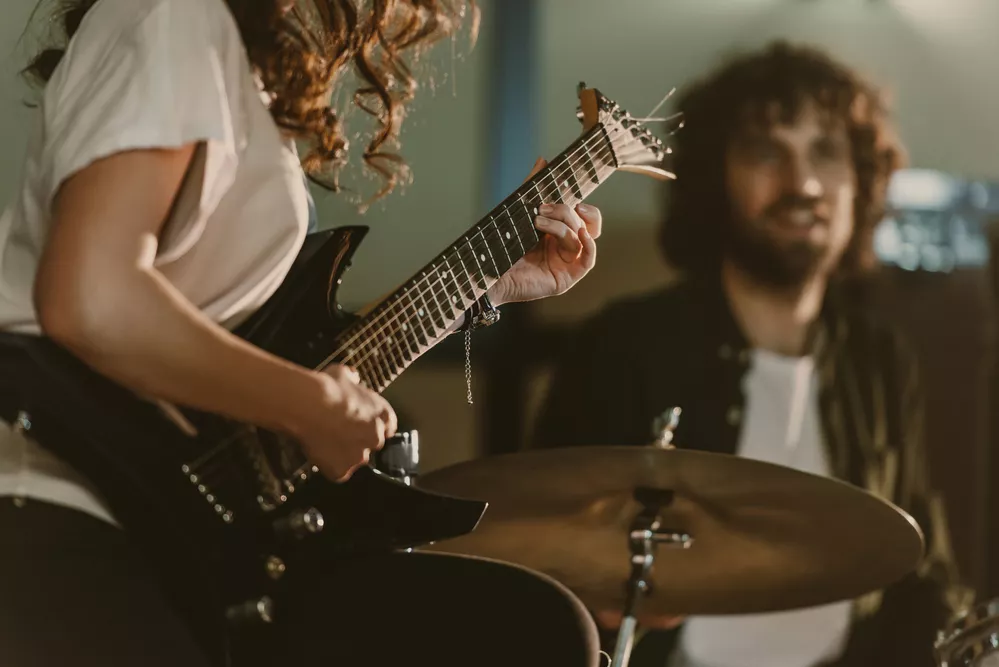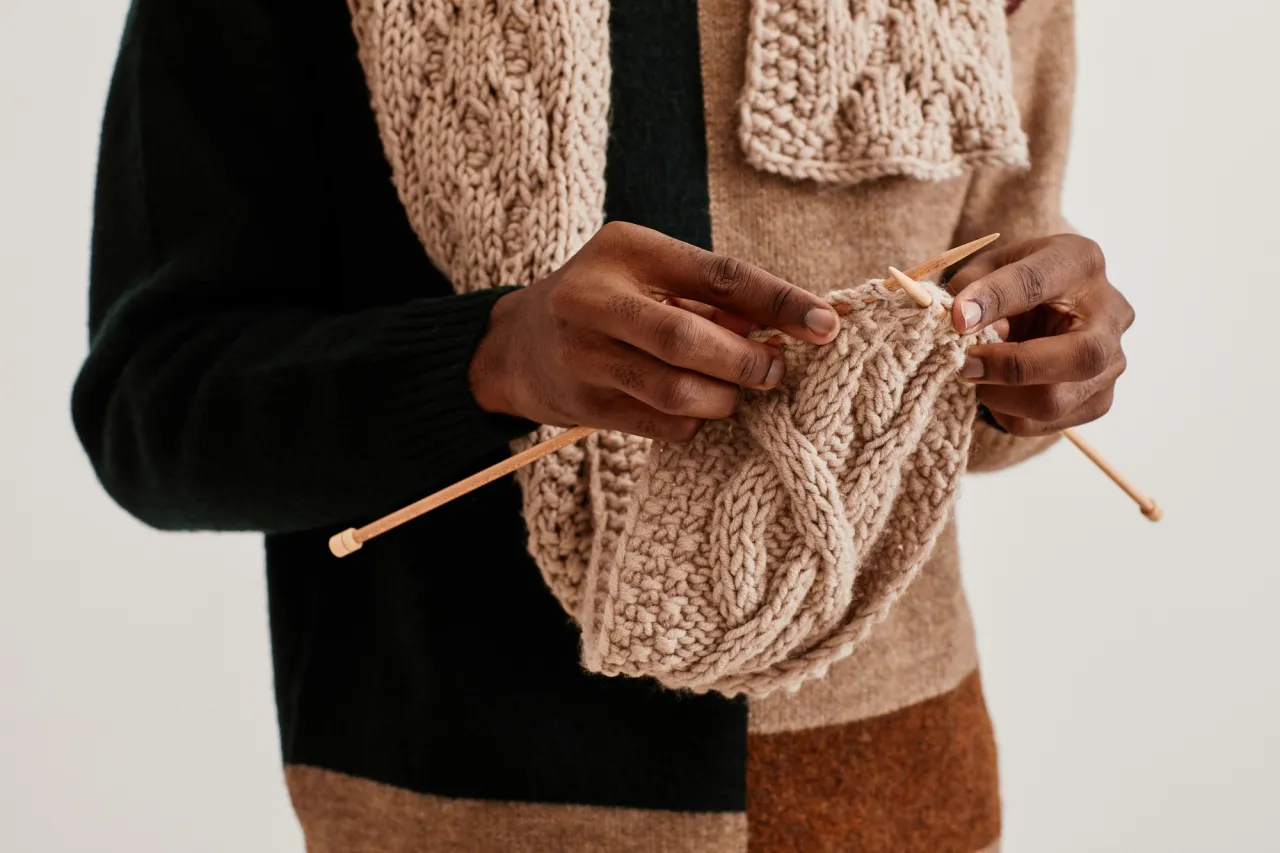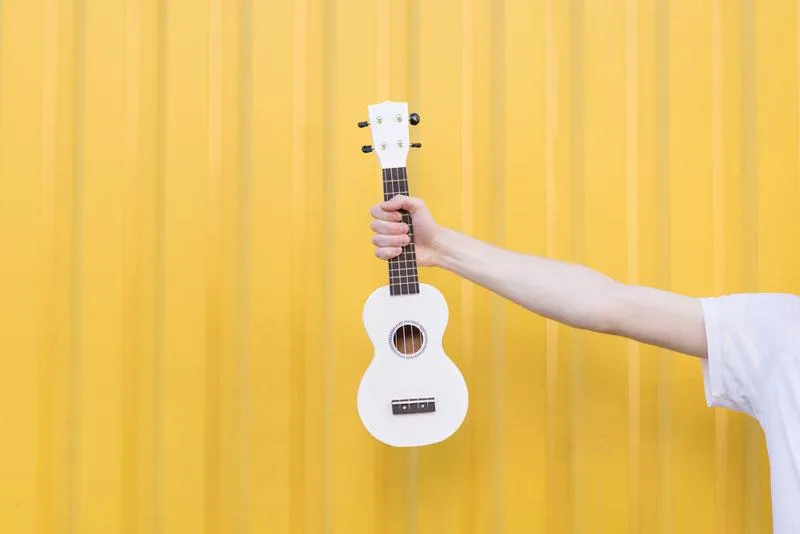Guide on Choosing Music for Ads, Videos, Podcasts [Music Collections Included]
How we perceive music and sound experience has a huge impact on life around the world. Sounds can motivate and energize, they help us navigate and quickly understand what is happening around us, they can also be a source of pleasure and signals of danger.
Music and sound effects have a huge potential in marketing as well. Consider the hype around ClubHouse social network, the growing revenue of audio streaming platforms, as well as the demand for audio messaging, and more and more users launching their podcasts (read more here). It’s time to start paying attention to how you can use this to your advantage as well.
At the end of 2020, Depositphotos released a library of sound effects and music available under Monthly and Yearly Unlimited Subscriptions. Since then, thousands of sound designers and composers have joined us as contributors and many brands as our new customers. We wanted to share some research, insights, and tips about using sound effects in your projects to help you get on board as well.
What is stock music and where can you find it?
Royalty-free music (or stock music) are audio tracks that you can use for commercial purposes without obtaining personal permission from the artists. Sound designers create them and then add files to their portfolios on a stock platform (like Depositphotos), where they are available for purchase from any corner of the world.
As usual, you need to purchase a separate subscription to download audio from stock platforms you already use.
You can use downloaded content in commercials, site interface, presentation, your offline stores, and anywhere else as permitted by the type of license. This is legal, as stock platform contributors sign a licensing agreement and profit from each download of their content.
As with stock images or videos, you can choose the audio track by listening to it on Depositphotos. The music file will contain an audio watermark, that is, a recorded message telling that you are listening to a file from the Depositphotos library. When you buy the file, the watermark will disappear.
On Depositphotos, you can search for stock music by keywords, genres, moods, and length, as well as go to the portfolio of your favorite contributor. Like other files, you can add audio tracks to your Favorites folder.
Create even more associations with your brand
The sound choices for your brand should be based on sounds that you want your audience to associate with your products or services. The advantage of generating sound associations for your brand is that it helps you stand out and be more recognizable even when you are nowhere to be seen.
Take some of the most recognizable sounds in marketing and commercial product history: the MGM’s lion’s roar, the sounds of 8-bit games like Super Mario, or the tunes accompanying Intel’s logo. As soon as we hear them, the image of a certain product appears in mind. Find some stats and surprising facts here — Your Guide Integrating Audio Into Brand Communication [Infographic].
We have compiled a list of sounds that will be useful in the context of using audio on different platforms and for different project platforms.
What royalty-free music and sound effects you might need if…
…you launch a podcast
What you need:
— memorable intros and outros
— imaginary audience reaction sounds including applause, laughter, shouts of approval, crying, hooting, whistling, growling
— background music for a podcast
An important function of sound effects in podcasts is to keep the listeners engaged and focused. Audio cuts and interruptions help you to wake up your audience, as well as hint at what content is coming next. It’s also important that your podcast intro is memorable and doesn’t scare off those who play your podcast for the first time.
Great examples of podcasts with perfect background tracks: Lost Notes: 1980 (a music-documentary podcast on the history of pop music) and Dead Eyes (a personal story of an actor Connor Ratliff solving “a very stupid mystery that has haunted him for two decades: why Tom Hanks fired him from a small role in the 2001 HBO mini-series, Band Of Brothers”).
…you manage a YouTube channel
What you need:
— intros
— background music for credits
— background music of various moods for the body of your videos
— sound effects for interludes
Music on YouTube plays just as important a role as video because most people don’t watch the screen the whole time when they play the content. The background music you choose for your video should match with its idea, style, mood, and narration. It’s best not to start your video with harsh sounds (unless you want to scare or surprise your audience).
The expressiveness of the tracks is best balanced with the expressiveness of the text of the story you are telling. They should reinforce each other, not compete against each other or juxtapose. See these explainer videos that have perfect audio tracks: Spotify: Listening is Everything and Can 100% renewable energy power the world? (TED Education).
…you’re developing an app or a web app
What you need:
— notification and interaction UI sounds that can’t be confused with anything
— music backgrounds and sound effect featuring things in the context of your product (big city sounds, office noises, sounds of nature)
The basic set of soundtracks you need to make your digital product user-friendly includes notification and interaction sounds for UI. These sounds reassure users that their commands or actions are being received and also forms a positive impression of a new product. However, this is only the basic level.
In 2021, you can come across hundreds of aesthetically pleasing websites and apps, where audio tracks are the backbone of user experience. Take Gucci Gift Giving, a site that presents the brand’s collection as a virtual stroll through the office during the holidays.
Here’s another mind-blowing example: the GOOD Meat website, which allows us to literally touch bird feathers and learn about the technology of growing meat without polluting the environment and killing animals.
…you are planning an ad campaign
What you need:
— background music with the right vibe (sadness, dreaminess, pressure, anxiety, optimism)
— attention-grabbing sounds for the final part of your video, where you need to focus the audience’s attention on your call to action
Recorded music has been used in advertisements ever since marketers have had the opportunity to play it for their audience. In ancient times, trade was accompanied by inviting cries of sellers, and today we can broadcast video ads on TV or on the Internet.
Since commercials are the most expensive video type in terms of production, we recommend that you test different background music options and have a focus group to see what appeals to them more and keeps them engaged.
As with YouTube videos, ads, audio, and video should work together in synergy. Check out how they are in sync in this recent Apple ad (The whole working-from-home thing). Messenger sounds, background music that evokes curiosity, capturing interludes, and branded Apple sounds, all work for the single marketing goal — to prove that any home office mission isn’t impossible with Apple equipment.
…you manage Instagram, Facebook, or other social media accounts
What you need:
— short melodic compositions to help translate the mood of your message
— music for Instagram videos that can be used in series of videos (Stories)
As social media users have a very short attention span, and there is a lot of content around them (and it is growing by the second), branded videos for social networks should be short, clear, and engaging from the first few seconds. Music and sound effects help make videos just like that.
Moreover, in order to reduce the cost of video production for social media, SMM experts can use static or animated templates, as well as animate photos (create slideshows). To make this content even more inexpensive to produce without making it boring and monotonous, you can use stock music. You can also find free sound effects on stocks. See the recent Depositphotos case.
…you design a game
What you need:
— sounds of interaction in the context of your game topic (jumps, strikes, steps, claps)
— atmospheric background music, which can keep the player inside the game and make them forget bout time
Games require a wide variety of sounds. These include sound effects that simulate interaction with the environment and human activities (rustling of leaves underfoot, the sound of turning pages, coughing), as well as a variety of background sounds, from dynamic music for battle scenes to the noise of the wind at sea.
As a rule, large in-house teams are involved in creating soundtracks for complex and expensive games. But if you are developing a game MVP (minimum viable product), indie, or a simple mobile game and are trying to spend as little money on production as possible, you can use a compilation of stock sound effects and music for the project. For example, in the ASMR (Autonomous sensory meridian response) collection below, you will find sounds that will help your game evoke an emotional response from the audience.
Examples of mobile and indie games contain simple soundtracks but are nevertheless beautiful and engaging: Among Us, Hades, Fall Guys: Ultimate Knockout, and — especially — Machinarium which simple yet gorgeous soundtrack became a quality standard for indie games about a decade ago.
…you are designing an offline experience
What you need:
— long-playing peaceful audio tracks that motivate people to move around the store, inspire them to buy more, and immerse them in the atmosphere
— uplifting short jingles for announcements
This article began with the idea that sounds are an essential part of the experience we get from interacting with the world around us. Turn off the music in restaurants, hotel lobbies, and boutiques, and all you will hear is the prosaic feet pounding, annoying conversations around you, and the sound of a door opening. That’s why restaurateurs invite musicians to their places, and seasonal playlists of retail chains such as Zara and H&M are becoming popular on YouTube. You can even promote your brand by creating branded playlists (see the examples of NikeWomen and Victoria’s Secret on Spotify)
On music platforms like Spotify and YouTube Music, you can find or generate playlists for your store, event, or hotel. But things such as jingles for info announcements are better to download from stocks.
Please note that music can both positively and negatively affect your visitors. Since people navigate space by decoding sounds, it is essential for them to continue to hear what is happening around them, as well as to talk to each other. Music that is too loud and too harsh, or in other words does not enhance the experience, can easily ruin their impression or register as discordant.
Final thoughts
As a marketer or product designer, you can ignore the importance of music and sound for your product, or start designing an audio-based user experience that will help you elevate your projects. But the problem you might soon encounter is that music production needs special skills and is costly if you set out to create compositions from scratch. And there are also numerous licensing issues concerning audio tracks.
Digital games, social media videos, podcasts, and apps are just a small list of areas where stock music and sound effects can help you stay on budget and save time without compromising on quality. Try to find the tracks you need on Depositphotos today to see how convenient and simple it is.
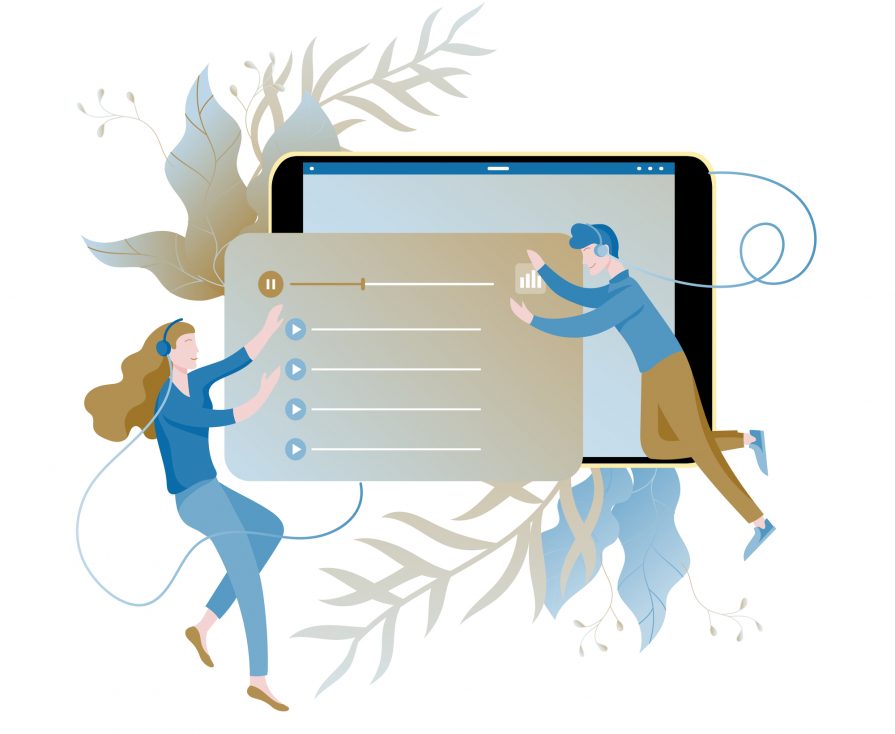
![2021 Guide on Choosing Music for Ads, Videos, Podcasts [Music Collections Included]](https://depositphotos-blog.s3.eu-west-1.amazonaws.com/uploads/2021/02/2021-Guide-on-Choosing-Music-for-Ads-Videos-Podcasts_8-1140x582.png)
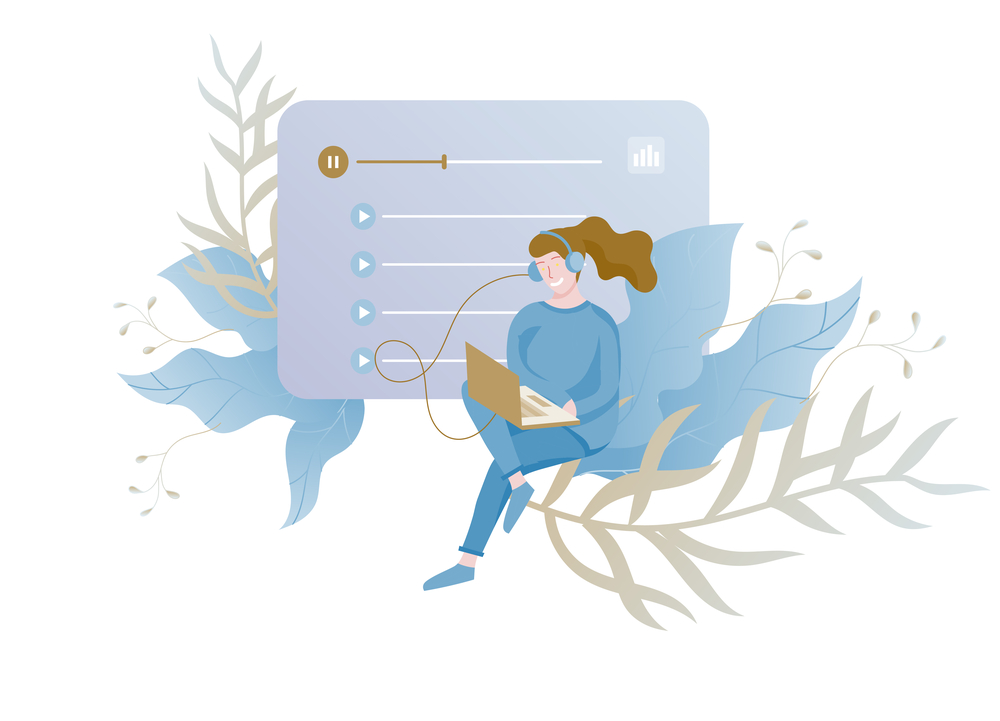
![2021 Guide on Choosing Music for Ads, Videos, Podcasts [Music Collections Included]](https://depositphotos-blog.s3.eu-west-1.amazonaws.com/uploads/2021/02/2021-Guide-on-Choosing-Music-for-Ads-Videos-Podcasts_9-1140x585.png)





